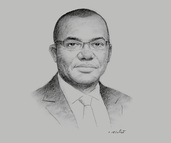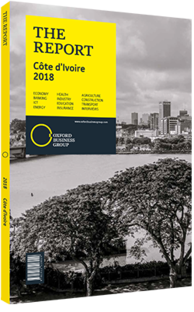Amidou Traoré, Director-General, CI-Energies: Interview

Interview: Amidou Traoré
What is the government’s energy strategy?
AMIDOU TRAORÉ: Broadly speaking, we are looking to double energy production, and strengthen and stabilise our electricity transport network while increasing access to the national energy grid. Energy access governs industrial development and is a major factor when determining the level of competitiveness of our economy. As a result, we must ensure we unlock our national and regional potential.
In order to achieve our desired results, we have developed a long-term policy, which we are in the process of implementing through various development programmes, including the 2012-30 National Electrification Plan for the production, transport and distribution of electricity. We are also in the process of implementing the National Development Plan 2016-20. This includes several projects that together are positioned to diversify our energy production mix with the specific goal that no single source of energy will account for greater than 60% of the system’s total capacity. In 2017 we deployed a new energy substation in Azito while reinforcing those in Yopougon, Djibi, and Anoumabo.
Presently we are working on substations in Bingerville and PK24, as well as those located in Anani and Grand-Bassam. All are scheduled to be on-line by the end of the first quarter of 2018. There are also a number of projects being developed outside of Abidjan, such as improvement work being completed in Bouaké, or the 375-MW San-Pédro clean coal thermal power plant.
To expand further on our renewable energy production commitments, we have signed a convention for a new thermal power plant with a 25-MW capacity and a tariff agreement with the SIFCA Group and Électricité de France (EDF) for our first biomass project, which will use agricultural oil palm waste gor a capacity of 46 MW. In addition, we are in negotiations for the development of a 50-MW solar plant.
How is Côte d’Ivoire working to increase national energy access and coverage?
TRAORE: Since 2012 the rate of national electricity coverage and access has increased from 33% to 53%, and from 74% to 81%, respectively. By 2018 we hope to provide access to an additional 1300 localities.
Despite our best efforts to expand energy coverage, the actual number of people fully connected to the grid trailed behind targets. This was due to the time and costs associated with home installations, certificates of conformity for electrical wiring, and so on. In response to this continuing challenge, another programme has been developed and deployed to increase the rate of electrification across the country by facilitating and reducing the sometimes prohibitive connection costs for individuals. Between 2014 and 2017 this initiative provided access for around 170,000 homes, and we are hopeful that this rises to a rate of 200,000 homes per year in the very near future.
How can Côte d’Ivoire solidify its position as a regional energy hub for West Africa?
TRAORE: Within a regional context, Côte d’Ivoire’s electricity network can be considered extensive and sound; it is financially stable and continues to provide opportunities for growth. Although we are able to respond to the current national energy needs, we are also working on expanding the capacity of the regional energy transport network so as to solidify our position as the significant regional energy hub for West Africa. Currently, our high-voltage network encompasses Togo and Benin and passes through Ghana, Burkina Faso and Mali.
In an effort to lower energy costs and strengthen the existing West African Power Pool network, a sub-regional interconnection project between Côte d’Ivoire, Liberia, Sierra Leone and Guinea is under way and expected to be completed by the year 2019.
You have reached the limit of premium articles you can view for free.
Choose from the options below to purchase print or digital editions of our Reports. You can also purchase a website subscription giving you unlimited access to all of our Reports online for 12 months.
If you have already purchased this Report or have a website subscription, please login to continue.

